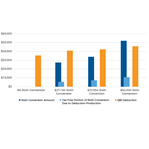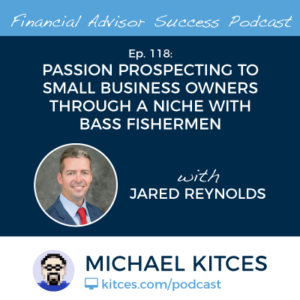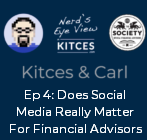One of the most significant changes made by the Tax Cuts and Jobs Act of 2017 was the creation of new IRC Section 199A, which provides small business owners with an up-to-20% deduction on the profits of their business. High income business owners have a number of complicated restrictions and/or “tests” that can reduce or eliminate that deduction, but for taxpayers with income below the start of their applicable phaseout range ($160,700 for single filers / $321,400 for joint filers) the deduction calculation is far more straightforward. Taxpayers “simply” receive a deduction equal to 20% of their (combined) qualified business income. Or, if lower, simply 20% of their taxable income (less capital gains and qualified dividends).
Notably, this potentially-lower 20%-of-taxable-income limit on the Qualified Business Income (QBI) deduction means that small business owners need to have some level of non-QBI income, to absorb the various tax deductions (e.g., the standard deduction or itemized deductions) they claim on their personal return, or they may not get the “full” QBI deduction on their business income. And while some business owners do have substantial amounts of non-qualified-business-ordinary-income, enabling them to receive the 20% deduction on the full amount of their Qualified Business Income, other business owners’ incomes are completely (or, at least, substantially) comprised of only Qualified Business Income. In such situations, the business owner’s deductions effectively get applied against their Qualified Business Income, reducing their QBI deduction (to “just” 20% of taxable income after those deductions).
However, not all deductions claimed on the personal tax return create this QBI deduction “problem” for small business owners. Some above-the-line deductions, such as the deduction for SE tax, SEP IRA contribution, and self-employed health insurance reduce both qualified business income and taxable income. Other above-the-line deductions, such as the deductions for IRA contributions, HSA contributions, and student loan interest, along will below-the-line deductions (either itemized deductions or the standard deduction) reduce only taxable income, potential limiting what could be a higher QBI deduction to 20% of taxable income.
Thankfully, though, this complication also presents taxpayers with a significant tax planning opportunity. By accelerating income, a portion of the tax liability that would normally be attributable to the increased income can be covered by a corresponding increase in the taxpayer’s 199A QBI deduction. And ultimately, this can lead to the “Deduction-Production” income being taxed at “just” 80% of the otherwise-applicable tax rate. And this Deduction-Production income strategy can continue to produce favorable results until a taxpayer’s total ordinary income, which is not qualified business income, equals the total of their deductions that reduce taxable income, but not qualified business income.
Of all of the ways in which a taxpayer can accelerate their income and engage in 199A QBI Deduction-Production, the “best” way will most likely be via Roth conversions. Not only do such conversions allow the business owner to reap the benefits of the “discounted” (via Deduction-Production) effective tax rate today, but they also help manage future taxes via continued tax-deferral and future tax-free distributions from the Roth account. Roth conversions are also easy to initiate and allow the business owner to precisely control the amount of income generated.
For those business owners who would benefit from Deduction-Production income, but who cannot make Roth IRA conversions, other options include earning additional W-2 wages, transitioning qualified dividend-producing investments to investments that generate ordinary income, taking distributions from non-qualified annuities, and simply timing deductions so that they occur in other years.
Of course, generating Deduction-Production income only works when the addition of more taxable income would increase the business owner’s 199A deduction. For high-income (taxable income of more than $160,700 for single filers, and more than $321,400 for joint filers for 2019) owners of specified service trade or businesses (SSTBs), additional income may reduce the current QBI deduction further, even if it’s currently constrained by the taxable income limitation, making Deduction-Production income a moot point. The same issue may also present itself to high-income owners of non-SSTBs if their QBI deduction is impacted by the wage or wage-and-depreciable-property tests.
In the end, though, the important thing to remember is that tax planning is first and foremost about trying to pay taxes at the lowest possible rate… something that is a lot easier to do when 20% of your income is effectively tax-free thanks to a deduction that increases in tandem with your income. Thus, for business owners who have their QBI deductions restricted by the taxable income limitation, accelerating “Deduction Production” income must be given adequate and careful consideration.





 Welcome back to the 118th episode of Financial Advisor Success Podcast!
Welcome back to the 118th episode of Financial Advisor Success Podcast!




